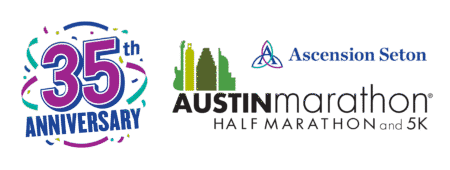PNC Bank Renews Sponsorship of Austin Marathon Health & Fitness Expo
The two-day event, that sold out last year, is set for February 13-14, 2026
PNC Bank will return as the presenting sponsor of the Ascension Seton Austin Marathon Health & Fitness Expo for the 2026 race weekend. This vital two-day event is scheduled for February 13-14, 2026, at the Palmer Events Center in Austin, Texas, immediately preceding the Austin Marathon, Half Marathon, & 5K on February 15. Welcoming thousands of participants, families, and fitness enthusiasts, the expo sets the stage for Austin’s most celebrated endurance event.
“The Health and Fitness Expo is more than packet pick up, it’s where the Austin Marathon weekend comes alive,” said Jack Murray, Co-Owner of the Austin Marathon. “Having PNC Bank return as presenting sponsor allows us to elevate this experience for our participants and community, building excitement for an unforgettable race weekend.”
The Health & Fitness Expo presented by PNC Bank, held annually over two days at the Palmer Events Center, serves as the central hub for event packet pick-up and features an extensive array of exhibitors. Spanning over 70,000 square feet of space, the expo offers participants and the public free access to the latest in running gear, nutritional products, recovery services, fitness technology, and more, providing essential resources for participants and the broader fitness community.
“PNC’s commitment to Austin goes beyond banking, it’s about being part of the city’s heartbeat. The Health and Fitness Expo presented by PNC BANK is a perfect way to celebrate the energy and connection that make Austin extraordinary,” said Steven González, PNC regional president for Austin.
This renewed commitment from PNC Bank underscores its dedication to supporting major community events and promoting wellness initiatives in Central Texas. The expo is a critical component of the Austin Marathon experience, offering a vibrant atmosphere where participants can prepare, learn, and engage before taking on the streets of Austin. The strong partnership between PNC and the Austin Marathon ensures a high-quality event for all attendees. Expo spaces are still open. Interested brands can register for the event online.
About PNC Bank: PNC Bank, National Association, is a member of The PNC Financial Services Group, Inc. (NYSE: PNC). PNC is one of the largest diversified financial services institutions in the United States, organized around its customers and communities for strong relationships and local delivery of retail and business banking including a full range of lending products; specialized services for corporations and government entities, including corporate banking, real estate finance and asset-based lending; wealth management and asset management. For information about PNC, visit www.pnc.com.
About the Ascension Seton Austin Marathon®: Since its inception in 1992, the Austin Marathon® has emerged as a world-class running event, attracting participants from all 50 states and over 50 countries. With a course that spans every quadrant of this dynamic city, offering a festive atmosphere with live music throughout, the marathon culminates in a vibrant finisher party. The event also serves as a powerful force for good, raising hundreds of thousands of dollars annually for various non-profit organizations. The Austin Marathon elevates Presidents Day weekend into a grand showcase of athleticism and community spirit, making it a bucket-list event for athletes, enthusiasts, and supporters from all over the world.

 1. The Springs at Barton Creek Greenbelt
1. The Springs at Barton Creek Greenbelt 2. Shuniya Yoga Collective
2. Shuniya Yoga Collective 3. Casa de Luz
3. Casa de Luz 4. Myo Massage Collective
4. Myo Massage Collective 5. Komé Sushi Kitchen
5. Komé Sushi Kitchen 1.
1.  2.
2.  3.
3.  4.
4. 5.
5. 

